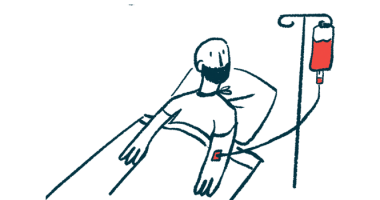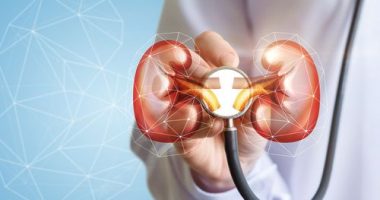COVID-19 Spurs Onset of aHUS in Infants With Unusual EXOSC3 Mutation

Two infants developed atypical hemolytic uremic syndrome (aHUS) caused by mutations in the EXOSC3 gene and subsequent COVID-19 infections, as described in a recent case report.
The cases, which are unusual in that they do not involve an imbalance of the immune system’s complement pathway, may offer insights into new aHUS mechanisms, the researchers noted.
The study, “Atypical hemolytic uremic syndrome induced by SARS-CoV2 infection in infants with EXOSC3 mutation,” was published in Pediatric Nephrology.
In aHUS, abnormal activity of the complement system causes blood clots to form in small blood vessels, leading to internal organ damage.
While most people with aHUS have mutations in genes involved in the complement system, these mutations alone are not enough to cause the disease. Usually, the onset of symptoms is triggered by an immune-activating stimulus, such as an infection.
A research team in Germany described the cases of two infants in whom infection with SARS-CoV2, the virus that causes COVID-19, led to them developing aHUS.
Both children — two unrelated boys of 4 and 4.5 months — showed very similar clinical presentations, the researchers said.
One had a history since birth of neurological abnormalities, while the other showed signs of strabismus, or crossed-eyes.
After arriving at the clinic with signs of COVID-19, both boys developed typical signs of aHUS, including hemolysis (red blood cell breakdown), thrombocytopenia (low platelet counts), and progressive kidney failure.
Levels of complement pathway proteins were normal in both boys. However, an aHUS diagnosis was suspected based on the other clinical presentations. Soliris, (eculizumab), a complement inhibitor marketed by Alexion, was given to both boys.
Ultimately, both required dialysis in the intensive care unit to treat their kidney disease. The boys also developed high blood pressure, which was treated with a combination of therapies.
Soliris appeared to be ineffective at preventing aHUS symptoms in both boys.
After six weeks, one boy was discharged from the hospital with nearly normal kidney function, but persistent high blood pressure and poor muscle tone. He also required tube feeding. Five months later, the boy continued to have high blood pressure and high protein levels in the urine — indicating impaired kidney function. Levels of complement proteins remained normal.
The second child was discharged after about a month, but required tube feeding. Five months later, the boy still had high blood pressure, elevated proteins in the urine, but normal complement protein levels.
Both were tested for genes associated with aHUS development, but no mutations were found.
Since neither showed signs of complement system involvement, and Soliris, a complement-targeted treatment, was unsuccessful, researchers looked for another genetic contributor to the boys’ symptoms, expanding the testing to all genes in the body.
Results showed both boys had the exact same mutation, called c.92G > C, in the EXOSC3 gene. This mutation is a known cause of pontocerebellar hypoplasia type 1b (PCH1b), a rare neurodegenerative disease marked by brain tissue shrinkage, muscle weakness, progressive feeding problems, developmental delays, and strabismus.
The EXOSC3 gene encodes a component of the RNA exosome, a protein complex involved in RNA degradation. RNA is the molecule that serves as a template for cells’ protein production.
Researchers hypothesized this mutation might have led to the wrongful accumulation or processing of SARS-CoV-2 RNA, setting the stage for severe infection and damage, leading to aHUS.
According to researchers, the lack of complement system involvement in these children makes their having aHUS unique.
“This would be the first description of a new — “RNA-induced” — mechanism for aHUS,” the researchers wrote.
“There is still much to be learned about the RNA exosome and deeper understanding might reveal the potential of new therapeutic strategies,” they wrote.







